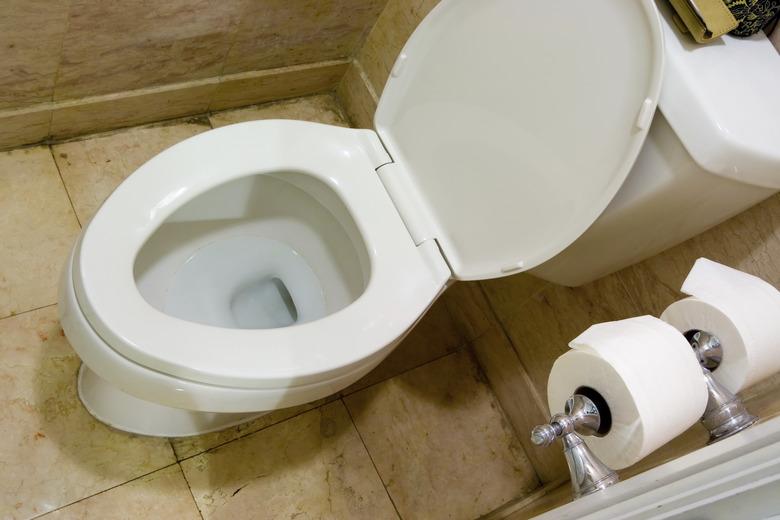Why Does The Water Make A Red Ring In Our Toilet Bowl?
When it comes to bathrooms and their toilets, issues with red rings around the bowls can often cause concern. Fortunately, they're not a big issue destined to cost serious money in plumbing bills to fix. They're usually the result of the bacterial organism Serratia marcescens. This bacteria is generally harmless except in certain medical issues related to wounds and pneumonia. Regular cleaning using a chlorine bleach solution effectively controls it.
Serratia Marcescens
Serratia marcescens bacteria is common in many environments. That includes bathrooms, where moisture and dampness are nearly always prevalent. It also doesn't require oxygen to live and is red or pinkish in color. Besides toilet bowls, it can often be seen in shower corners and on tile grout. Also, it's rod-shaped and is actually large, as bacteria go. It can be a cause of infection in hospital patients, especially those with wounds or pneumonia.
Toilet Bowls
Toilet bowls, by their nature, provide a welcoming environment for Serratia marcescens bacteria. That's because it's a common bacteria found in human fecal material, and it also thrives in moisture. Put the two together, and it's likely that a red toilet bowl ring will develop. And that's especially true in cases where bowls aren't cleaned on at least a periodic basis. They're also not killed off by anything less than chlorine-containing solutions.
Control Techniques
Serratia marcescens bacteria do well anywhere phosphorus-containing materials or materials high in fatty substances are present. Controlling the bacteria means first depriving it of any growth medium it can utilize to reproduce. That means cleaning up soap and shampoo residues. It also means cleaning toilet bowls with a chlorine-based cleaner. Using chlorine solutions also works extremely well in killing the bacteria off, though you'll probably never completely eliminate it. Unfortunately, once it establishes itself, it's more about control measures.
Other Considerations
If you see a red or pinkish ring developing in your toilet bowl, it's time to use chlorine bleach in a spray solution. Thoroughly clean the bowl and then spray it with chlorine bleach. Let it sit in the bowl for about 15 to 20 minutes. You should also put about a 1/4 cup in your toilet's tank at the same time. After time's up, flush the toilet a few times.
Taking Precautions
Bleach is corrosive to rubber and other materials, and you should only use it in toilets sparingly. After you've killed off the bacteria, it's simple to keep the problem in check by cleaning your toilet regularly. Just use any commercially available toilet bowl cleaner. Toilet bowl cakes are useful as well. Never use chlorine bleach if you have a septic tank, however. You can kill off the tank's helpful bacteria by continually exposing it to chlorine.
